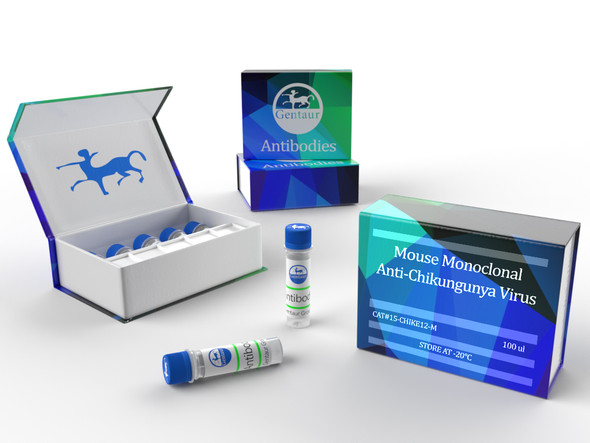Description
MOUSE ANTI-CHIKUNGUNYA VIRUS VLP (EB6)
This mouse anti Chikungunya VLP antibody recognises Chikungunya virus VLPs containing E1, E2 and Capsid proteins.
PRODUCT DETAILS – MOUSE ANTI-CHIKUNGUNYA VIRUS VLP (EB6)
- Mouse anti Chikungunya VLP antibody recognises the Chikungunya virus VLP, containing E1, E2 and Capsid proteins.
- Immugen comprised an equal mix of Chikungunya, Mayaro and O’nyong’nyong virus VLPs (E1, E2 and Capsid proteins).
- Antibody cross-reacts with Mayaro virus VLPs and E2 protein in ELISA. It shows no cross-reactivity with O’nyong’nyong virus or Ross River virus VLPs.
- Antibody recognises VLPs for CHIKV, ONNV, MAYV and RRV in non-reducing Western blot. Antibody not suitable for Western blot in reducing conditions.
BACKGROUND
Chikungunya virus is a member of the genus Alphavirus in the family Togaviridae. Chikungunya fever is a mosquito-borne disease first identified in Tanzania in 1953. Since 2004 there have been extensive outbreaks in Africa and Asia, and in 2013 the first cases were identified in the Caribbean, and by September 2014 more than 650,000 cases had been reported in the Americas. Chikungunya fever usually starts 2–4 days after chikungunya virus infection, with clinical symptoms including high fever, rash, headache, vomiting, myalgia, and severe joint pain.
Diagnosis of CHIKV may be hampered by the fact that clinical symptoms of CHIKV are similar to those seen in cases of Dengue Virus and Zika Virus infection. Therefore, differential diagnosis is an important consideration in areas where flaviviruses such as Dengue and Zika co-circulate. Currently, there is no specific treatment available for the treatment of Chikungunya fever or licensed vaccine for the prevention of CHIKV infection.
Virus-Like Particles (VLPs) are an emerging vaccine technology and consist of protein shells comprising outer proteins specific to the virus in question. The Native Antigen Company’s Chikungunya virus VLP is composed of E1, E2 and capsid proteins, from Chikungunya virus sequences. Concentration and purification is then performed by a series of ultracentrifugation and chromatographical methods which result in VLPs of exceptional quality and purity. These antigens are then used to produce antibodies with higher affinity and greater sensitivity, which can used for multiple applications.






